This article explores the different types of black tea!
If you are a tea lover, you may already know that black tea is one of the most popular types of tea worldwide. Black tea stands out from other varieties like green or oolong tea because it’s fully oxidized, resulting in a bold and robust flavor that lingers on your palate.
This esteemed beverage, originating in China, is now cherished in many countries, thanks to its rich taste and potential health benefits.
Join us on a journey where we explore popular and lesser-known types of black tea. We will discuss the tea’s processing method and health benefits. And, we will not conclude without providing our top recommendations!
Please note: This article contains affiliate links, meaning I may earn a commission if you make a purchase by clicking a link. Of course, this comes at no extra cost to you and helps me keep offering readers solid information.
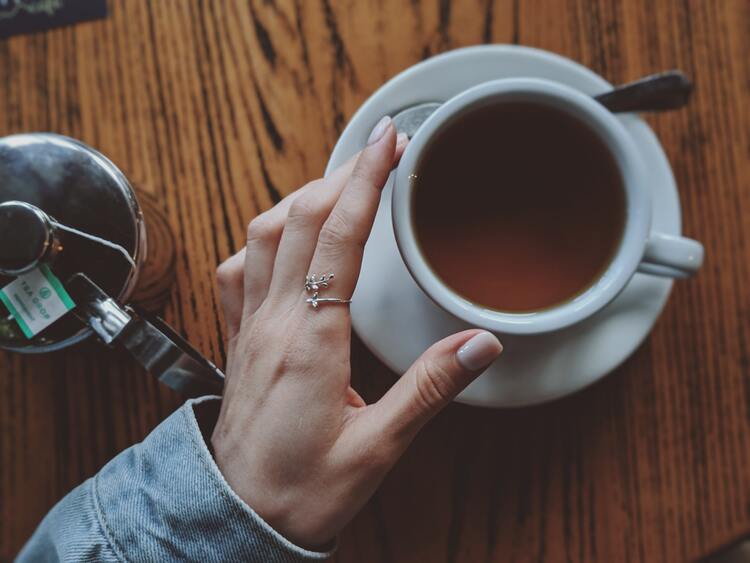
Types of Black Tea
Most of the black tea in the world comes from several countries, with the largest producers being China, India, Kenya, and Sri Lanka. These countries have favorable climates and ideal conditions for growing tea plants.
Below is a summary of the most popular types of black teas (known by specific names, usually associated with the growing region).
Fujian Black Tea
There are no records of when the process (full oxidation) to produce black tea was developed. However, it is believed it was developed in China’s Fujian province. That is why Fujian black teas are first on our list.
It is important to understand that Chinese black teas are divided into three types: gongfu (congou), xiaozhong (souchong, smoked), and brick tea. Most black teas in the country, including those of the highest quality, are classified as gongfu.
Fujian’s more popular black teas are produced in Tanyang, Zhenghe, and Bailin.
Keemun Tea
Keemun tea is a prized Chinese black tea from the Qi Men (pronounced “Chee Mun”) County, Anhui Province. It’s famous for its unique, slightly smoky flavor, and wine-like aroma. Keemun tea is often used in blends. For example, it is one of the main ingredients in classic English Breakfast tea.
Keemum is one of China’s famous teas.
Dianhong (Yunnan) Tea
Yunnan tea comes from the Yunnan Province in southwestern China, known as the birthplace of tea itself. Distinctive in its peppery, earthy taste and honey-like aroma, Yunnan tea varies depending on the region and plantation where it’s grown.
Lapsang Souchong
This Chinese black tea is famous for its intriguing smoky profiles, as the leaves are dried over pinewood fires. The aroma not only imparts a distinct fragrance but also an unforgettable taste.
This is another Fujian masterpiece. Higher grade souchongs include Jin Jun Mei.
Assam Tea
Assam tea originates from the northeastern region of India, specifically the state of Assam. This is the most productive tea-growing region in the world.
Black teas from this region are known for their strong, malty flavor and dark color. They are often used as the base for popular tea blends like English and Irish Breakfast. The tea leaves for Assam tea are primarily harvested during two seasons, called “flushes”:
- First flush: March to May
- Second flush: June to September
Darjeeling Tea
Darjeeling tea hails from the Darjeeling region of India, nestled within the foothills of the Himalayas. This delicate, aromatic tea has been called “The Champagne of Teas.” It’s harvested during different flushes, each yielding unique flavor profiles:
- First flush: March to April (light, floral)
- Second flush: May to June (mellow, fruity)
- Third flush: July to September (rich, full-bodied)
Nilgiri Tea
From the southern part of India, you have Nilgiri tea, grown in the Blue Mountains (Nilgiris) in Tamil Nadu. Known for its bright, brisk flavor and fruity aroma, it’s a popular addition to iced tea and flavored tea blends. Due to the region’s high altitude, this tea can be harvested yearly.
Ceylon Tea
Ceylon tea is grown on the beautiful island of Sri Lanka, formerly known as Ceylon. Sri Lankan tea gardens offer three main types, depending on the elevation:
- High-grown: delicate, complex flavor
- Mid-grown: robust, strong flavor
- Low-grown: dark, full-bodied flavor
Kenyan Black Tea
Kenya is one of the largest exporters of black tea globally. The high-altitude regions and favorable climate in Kenya contribute to the production of distinguishing black teas. Kenyan black teas are known for their rich and robust flavors, often accompanied by bright coppery infusions. They are frequently used in blends and are cherished for their briskness.
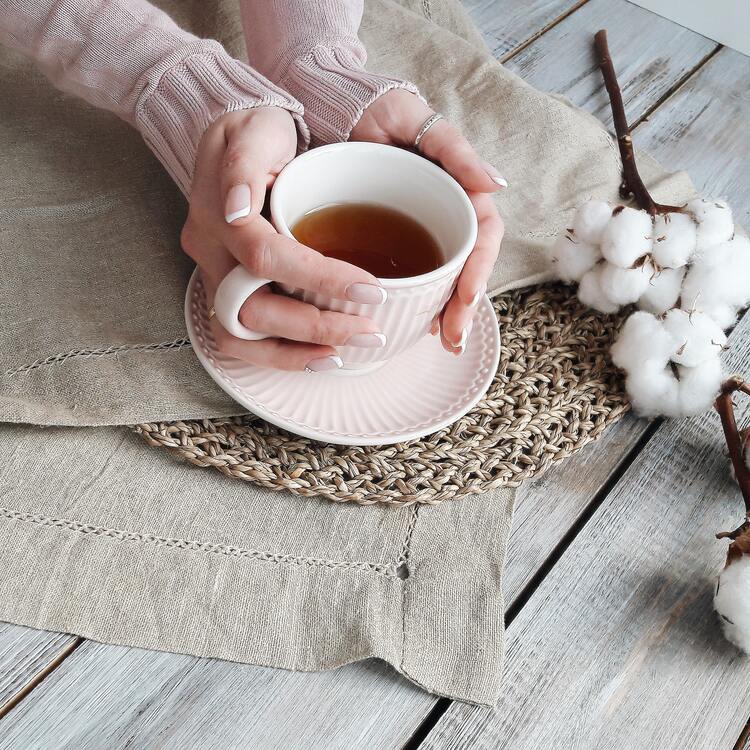
Other Types of Black Tea
While India, China, Kenya, and Sri Lanka often take center stage in black tea production, numerous other countries around the globe produce exceptional varieties worth discovering.
Find below some examples (because we cannot conceive an article about types of black tea without mentioning them).
Taiwanese Black Tea
Taiwan, famous for its oolong teas, also produces remarkable black teas. Taiwanese black teas are known for their unique flavor profiles and aromatic qualities. One of the most popular varieties is Sun Moon Lake Black Tea, which offers a smooth and mellow taste with hints of cinnamon and mint. These teas are highly regarded for their complexity and depth of flavor.
Georgian Black Tea
Georgia, located in Eastern Europe, has a long history of black tea cultivation. Georgian black teas are typically grown in the mountainous regions of the country. They are recognized for their bold and robust flavors, often with malty undertones. Georgian teas are renowned for their full-bodied character, making for a satisfying black tea cup.
Vietnamese Black Tea
Vietnam is one of the largest tea-producing countries globally, and while it is well-known for its green and jasmine teas, it also produces black teas of exceptional quality. Vietnamese black teas tend to have a smooth and subtle taste, often with notes of honey and caramel. They are known for their pleasant and delicate flavors.
Indonesian Black Tea
Indonesia is renowned for its particular tea varieties, including black tea. One notable Indonesian black tea is the Indonesian Bohea, which offers a distinct smoky flavor and aroma. Indonesian black teas are known for their earthy and slightly sweet profiles, making them a captivating choice for tea enthusiasts.
Turkish Black Tea
While Turkey is traditionally associated with its rich coffee culture, it also produces black tea consumed widely throughout the country. Turkish black tea is prepared using a double teapot, resulting in a strong and dark brew. It is often served in small tulip-shaped glasses and is a significant part of Turkish hospitality and social gatherings.
Argentine Black Tea
Argentina, renowned for its vast landscapes and vibrant culture, is also a notable producer of black tea. The country’s tea industry thrives in regions like Misiones and Corrientes, where favorable climate and fertile soil produce high-quality tea leaves. Argentine black teas often display a smooth and mellow flavor profile with hints of fruitiness and a subtle sweetness.
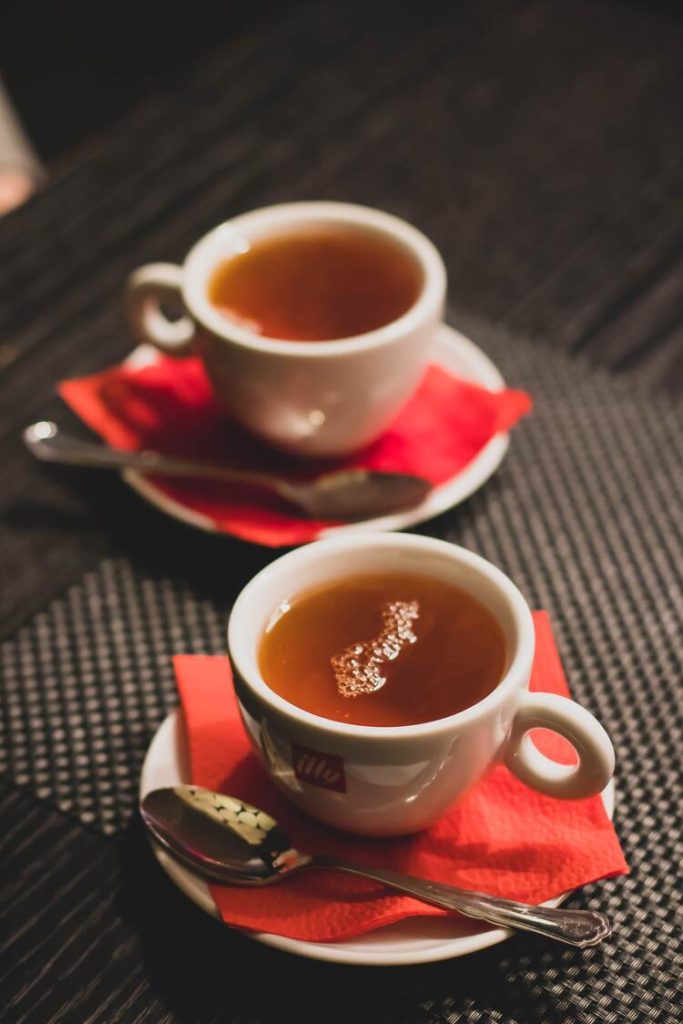
Popular Blends and Flavored Black Teas
As mentioned, black tea is one of the most consumed beverages worldwide. Due to its popularity, it is used in blends (black tea blends or combined with other ingredients), or as a base for recipes. Find below some of the most popular blends.
English Breakfast
English Breakfast tea is a classic, full-bodied blend you’ll love. It typically consists of Assam, Ceylon, and Kenyan black teas, giving it a robust and rich flavor. The blend is perfect for pairing with your morning meals, as it cuts through heavier flavors like butter or bacon. Many people enjoy adding milk, honey, or lemon to their English Breakfast tea.
Irish Breakfast
Try Irish Breakfast tea if you’re looking for a strong, malty blend. This blend typically includes Assam and other full-bodied teas, creating its bold, dark appearance. Irish Breakfast tea is often considered stronger than English Breakfast tea, which pairs wonderfully with hearty breakfast foods. Customize your cup with a dash of milk and sugar, if desired.
Earl Grey
For a more fragrant experience, reach for Earl Grey tea. At its core, it’s a black tea infused with bergamot oil, which provides its signature citrusy aroma. Typically made from a blend of Indian and Sri Lankan teas, Earl Grey has a distinct flavor you can enjoy anytime. Some variations even include lavender flowers, adding a floral note to the tea.
Masala Chai
Add a touch of spice to your tea with Masala Chai. This Indian tea combines black tea leaves with aromatic spices, like cardamom, cinnamon, ginger, cloves, and black pepper. You can customize your masala chai by adjusting the spices to your taste. Traditionally, this tea is brewed with milk and sweetened with sugar, creating a rich and comforting experience.
Processing and Oxidation
When it comes to the processing and oxidation of black tea, you need to understand that the tea leaves come from the plant Camellia sinensis. Oxidation is a significant process that impacts your tea’s taste, aroma, and color.
Oxidation occurs when the tea leaves are allowed to wither and their enzymes are exposed to oxygen. This process helps the tea to develop its characteristics, including its robust flavor and dark appearance. The longer the leaves can oxidize, the stronger and darker the resulting black tea.
There are mainly two methods of processing black tea: the orthodox method and the crush, tear, curl (CTC) method.
- Orthodox method: This traditional technique involves carefully withering, rolling (twisting the leaves), oxidizing, and drying the tea leaves by hand. The leaves are often rolled to break their cell walls gently, releasing essential oils that contribute to the tea’s flavor. Afterward, they oxidize for several hours before finally being dried.
- Crush, Tear, Curl (CTC) method: This more modern approach is crushing, tearing, and curling the tea leaves into small, uniform pieces. The CTC method is more efficient and faster, as the leaves are quickly exposed to air, promoting faster oxidation. This method often produces stronger and bolder black teas.
Remember that the oxidation level plays a significant role in determining the flavor profile of black tea. The longer the tea leaves are allowed to oxidize, the heartier and more robust the flavor will be.
However, to maintain the quality of the tea, the oxidation process must be stopped at the right time to prevent the leaves from becoming overly astringent or losing their distinct characteristics.
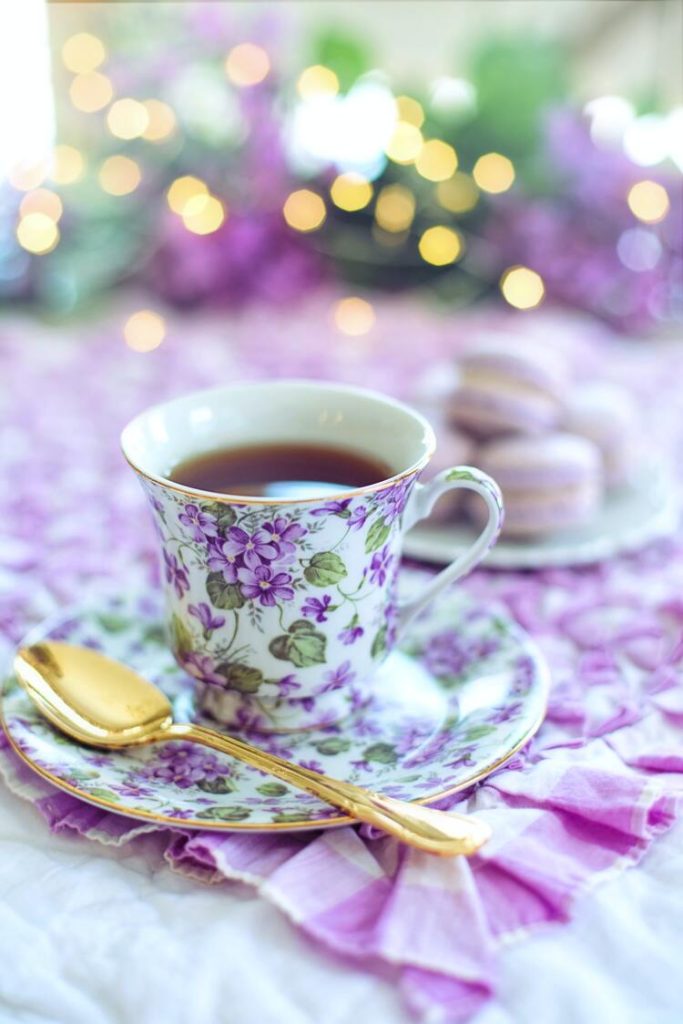
Caffeine Content
Black tea contains caffeine, although the exact amount can vary depending on the specific tea variety, brewing method, and steeping time. A cup of black tea contains approximately 40 to 70 milligrams of caffeine per 8-ounce serving. However, it’s important to note that these figures are approximate and can differ.
The caffeine content in black tea is lower than in coffee but higher than in many other beverages, such as green or herbal tea. For comparison, a cup of coffee typically contains around 95 to 165 milligrams of caffeine per 8-ounce serving.
If you’re particularly sensitive to caffeine or prefer to limit your intake, you may opt for decaffeinated black tea. Decaffeinated black tea has undergone a process to remove most of the caffeine, although trace amounts may remain.
Health Benefits and Properties
Drinking black tea has several health benefits you might not be aware of. It’s packed with antioxidants, such as polyphenols, flavonoids, and catechins, which can help protect your body against damage caused by free radicals. These antioxidants play a crucial role in maintaining your overall health.
Regular consumption of black tea might also help in reducing the risk of certain health conditions:
- Cancer: The antioxidants present in black tea, especially catechins, have been shown to exhibit potential cancer-fighting properties. While more research is needed, black tea may help reduce the risk of certain types of cancer.
- Blood Pressure & Stroke: Studies have suggested that drinking black tea can help maintain healthy blood pressure levels. By doing so, it could help decrease the risk of stroke.
- Diabetes: Black tea may help with managing and regulating blood sugar levels. This can be particularly beneficial for those with or at risk for diabetes.
While research is ongoing, incorporating black tea into your daily routine can provide various potential health benefits. So, go ahead and enjoy a comforting cup of black tea!
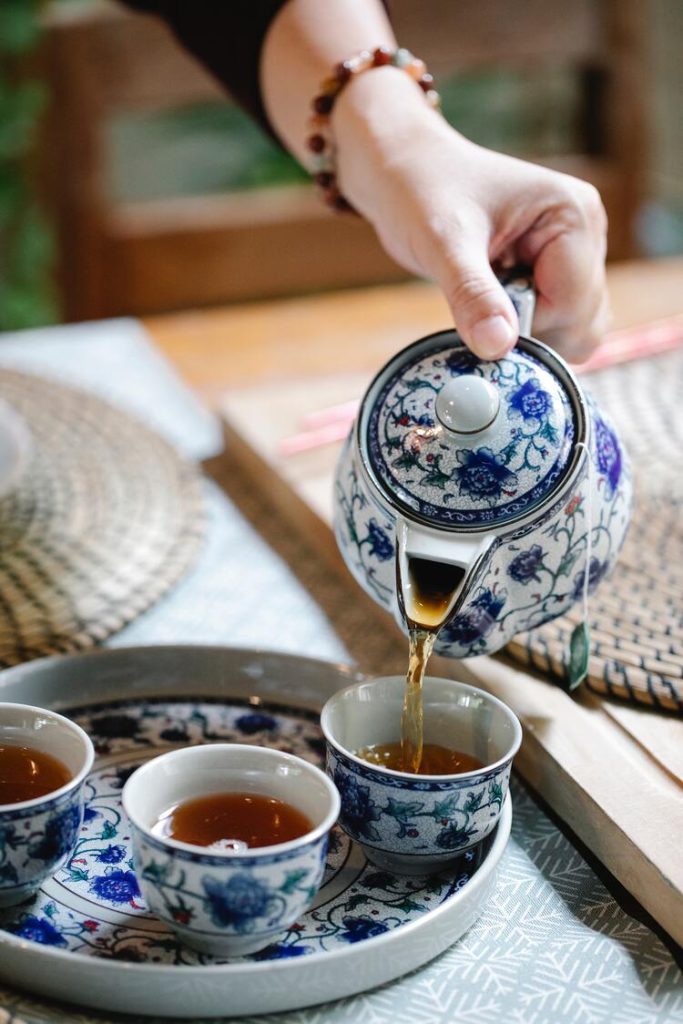
Comparing Black Tea to Other Types of Tea
How does black tea compare to other types of tea? Let’s dive into the differences between black tea and other common tea varieties.
Green Tea
Green tea is processed by steaming or pan-firing the leaves, which prevents oxidation (in other words, the oxidation process is stopped by applying heat). As a result, you’ll find that green tea has a fresher, lighter flavor than black tea. The high antioxidant content in green tea is known for providing numerous health advantages, such as improving brain function and reducing the risk of heart disease.
White Tea
White tea undergoes minimal processing, which leaves it with a delicate flavor and a light color. This also preserves its high antioxidant content. White tea possesses the most antioxidants of all tea types.
Yellow Tea
Like green tea, yellow tea has a gentle taste and is less oxidized. However, yellow tea undergoes a unique, slow-drying process that imparts a slightly mellow and richer flavor. Its rarity and labor-intensive production contribute to its higher price.
Oolong Tea
Oolong tea is semi-oxidized, falling between black and green tea in flavor and color. You’ll find oolong teas in a wide range of oxidation levels, with some tasting closer to green tea and others resembling black tea. Known for their fragrant, orchid-like aroma, these teas may have health benefits similar to other teas.
Herbal Tea
Herbal tea is different, as it doesn’t come from the Camellia sinensis plant. Instead, these teas are made from various fruits, herbs, spices, and flowers. So, while it’s not technically a tea, it still offers various flavors and health benefits. Herbal teas are typically caffeine-free and can be enjoyed at any time of the day.

Preparation and Consumption
You have two main choices when preparing black tea: tea bags or loose-leaf. Each option offers a different experience, so let’s explore how to prepare and consume black tea using both methods.
Tea Bags
Tea bags are convenient and easy to use. To prepare a cup of black tea using a tea bag, follow these steps:
- Boil water and let it cool for a minute or two. The ideal temperature for black tea is around 200°F (93°C).
- Place your tea bag in a cup.
- Pour the hot water over the tea bag.
- Let the tea steep for 3-5 minutes, depending on how strong you prefer your tea.
- Remove the tea bag and enjoy!
You can add various flavorings to your cup of black tea, such as:
- A slice of lemon for a citrusy twist
- Mint leaves for a refreshing note
- Milk for a creamy texture (this is commonly done with certain types of black tea, like English Breakfast and Assam)
Loose Leaf
Loose-leaf tea offers a wider variety of flavors and can provide a higher-quality taste experience. To prepare black tea with loose leaves, follow these guidelines:
- Boil water and let it cool for a minute or two, just as with tea bags. Aim for a temperature close to 200°F (93°C).
- Measure your loose-leaf tea. A general guideline is using 1 teaspoon of tea leaves per 8-ounce cup of water.
- Place your tea leaves in a teapot or a tea infuser inside your cup.
- Pour the hot water over the tea leaves.
- Let the tea steep for 3-5 minutes.
- Remove the tea leaves or infuser from your cup or pour the tea through a strainer to remove the leaves.
Like with tea bags, you can add lemon, mint, or milk to your loose-leaf black tea according to your taste preferences.
Remember that you can adjust the steeping time or tea-to-water ratio to suit your taste when brewing black tea. Enjoy experimenting and finding your perfect cup of black tea!
Types of Black Tea: Buying Recommendations
You may be eager to try the types of black tea you discovered in this article. Since I was anticipating that, here are our top recommendations:
Organic Positively Tea Company, Assam TGFOP Black Tea

VAHDAM, Darjeeling Tea Leaves from Himalayas

Organic Positively Tea Company, Nilgiri FBOP Black Tea

Pantenger Ceylon Tea Loose Leaf

Davidson’s Tea Bulk, Keemun Congou

Numi Organic Tea Chinese Breakfast

Kericho Gold Black Loose Leaf Tea

Black tea offers a wealth of variety in flavors, styles, and caffeine content. Embrace the exciting possibilities and continue to discover your preferred taste profiles while expanding your black tea knowledge.
Did you know about all these types of black tea?